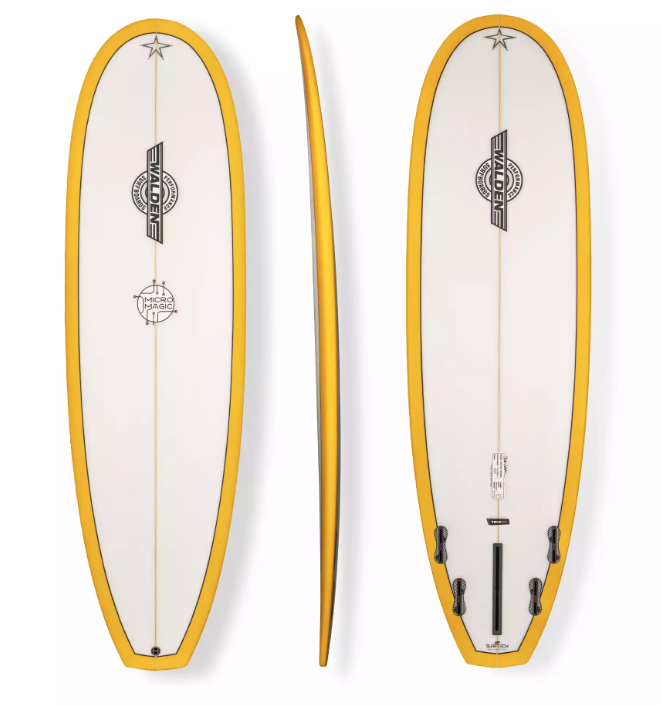Description
Walden Micro Magic – Trueride PU – FCS II – 4 + 1 – Yellow
The Micro Magic has all the best attributes of a longboard packed into a small, easy to manoeuvre, performance-oriented board under 7ft long. Riders will love how the extra volume under the chest increases paddling power and find the full rails improve stability while maximizing float through flat sections. A complete longboard outline combined with the 2+1 fin option means riders can even noseride the Micro Magic, tapping into traditional log vibes. The option to switch to a 4-fin setup maximizes the board’s drive allowing high speed and critical surfing in the wave’s pocket.
| Dimensions | Volume |
| 6’0 x 21” x 2 5/8” | 38.1 ltr |
| 6’4 x 21 1/2” x 2 3/4″ | 43.3 ltr |
| 6’8 x 21 3/4″ x 2 3/4″ | 46.3 ltr |
Consistent with other surfboards in Steve’s Magic line, the Micro Magic’s rails and bottom contours feature a blend of progressive bevels, concaves, and hard edges. It’s safe to say nobody does bottom contours like Steve. Proven heavily in competition by Steve and a host of other team riders, Steve’s “Magic” features allow the board to turn easier, dig rail less, and plain at high speed with less work. The result of combining all these features is a board that makes surfing easier and allows surfers to catch more waves, ride waves longer and pull off manoeuvres they wouldn’t be able to on other boards. Being such a versatile board, we hate to say the Micro Magic will only work in certain conditions because, in truth, anybody could ride this board in just about any wave and have a good time. For those looking to marry the feeling of long and shortboard into one, want immediate performance gains, or are looking for a board that performs across all conditions, we highly recommend the Micro Magic from Steve Walden.
Trueride – Traditional PU
TRUERIDE boards consist of a PolyUrethane Core, PolyEster Resin, and model specific fiberglass layups specked to achieve the right balance between weight and durability. Surftech’s TRUERIDE construction is our most traditional surfboard build, providing users with a dependable and predictable surfing experience.
- PolyUrethane Core – High-density polyurethane core for performance and feel
- PolyEster Resin – Advanced polyester resin for strength hand flex
- 6oz Fiberglass w/4oz Full Patch – High strength to weight ratio, balanced for performance and durability
- Wood-Ply Stringer – Wooden fibres create a natural flex and adds break-strength
- FCS II + Centre Fin Boxes – Takes just seconds to insert and remove the fins
- Airbrushed Rail Band and Pin Lines – Long lasting colours keep your board looking new longer
- Sanded Finish – The fasted finish, optimized for high-speed surfing




